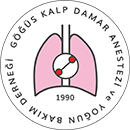

Enhanced Recovery In Cardiac Surgical Patients With Low Left Ventricular Ejection Fraction: A Controlled Before-and-After Study
İpek Yakın Düzyol1, Kemal Saraçoğlu2, Hüseyin Şaşkın3, Emine Yurt1, Mehmet Yılmaz1, Çağrı Düzyol3, Ayten Saraçoğlu41Department of Anesthesia and Reanimation, University of Medical Sciences Kocaeli Derince Training and Research Hospital, Kocaeli, Türkiye2Department of Anesthesia and Reanimation, University of Medical Sciences Kartal Training and Research Hospital, İstanbul, Türkiye
3Department of Cardiovascular Surgery, University of Medical Sciences Kocaeli Derince Training and Research Hospital, Kocaeli, Türkiye
4Marmara University Pendik Training and Research Hospital, İstanbul, Türkiye
Objectives: The application of Enhanced Recovery After Surgery (ERAS) in cardiac surgery has been increasing in recent years. The goal of this controlled before-and-after study is to compare the postoperative follow-up periods of patients who had low left ventricular ejection fraction and were operated on for coronary artery bypass grafting using the ERAS protocol and the standard protocol (CABG).
Methods: Controlled before-and-after study. A single hospital-based study. Perioperative data from 50 consecutive patients who used the standard protocol (preERAS) were matched with data from 50 consecutive patients in the prospective group (postERAS) which consisted of 50 consecutive patients. Patients with low left ventricular ejection fraction were detected in both groups.
Results: Patient demographics, operation and cross-clamp durations, cross-clamp and CPB, amount of perioperative bleeding, time of extubation, length of stay in the intensive care unit and hospital, and complications were all recorded and compared between groups. The time of extubation was statistically significantly earlier in the posters group (7.2±2.2 h vs. 10.9±6.0 h, p=0.001). Perioperative blood loss was statistically significantly lower in the postERAS group than in the preERAS group (359±56.9 vs. 392±75.8 cc respectively, p=0.028). The patients under posters protocol stayed statistically importantly lower in the intensive care unit (2.1±0.5 days vs. 2.4±0.8 days, respectively p=0.002).
Conclusion: The ERAS pathway was found to be feasible in patients and was associated with shorter extubation time, less perioperative bleeding, and a shorter stay in the intensive care unit and hospital.
Makale Dili: İngilizce
(698 kere indirildi)

















